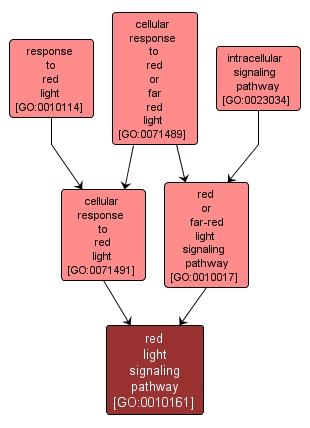| Desc: |
The series of molecular signals initiated upon sensing of red light by a photoreceptor molecule. Red light is electromagnetic radiation of wavelength of 580-700nm. An example of this response is seen at the beginning of many plant species developmental stages. These include germination, and the point when cotyledon expansion is triggered. In certain species these processes take place in response to absorption of red light by the pigment molecule phytochrome, but the signal can be reversed by exposure to far red light. During the initial phase the phytochrome molecule is only present in the red light absorbing form, but on absorption of red light it changes to a far red light absorbing form, triggering progress through development. An immediate short period of exposure to far red light entirely returns the pigment to its initial state and prevents triggering of the developmental process. A thirty minute break between red and subsequent far red light exposure renders the red light effect irreversible, and development then occurs regardless of whether far red light exposure subsequently occurs. |














